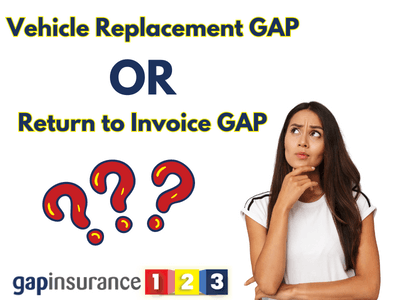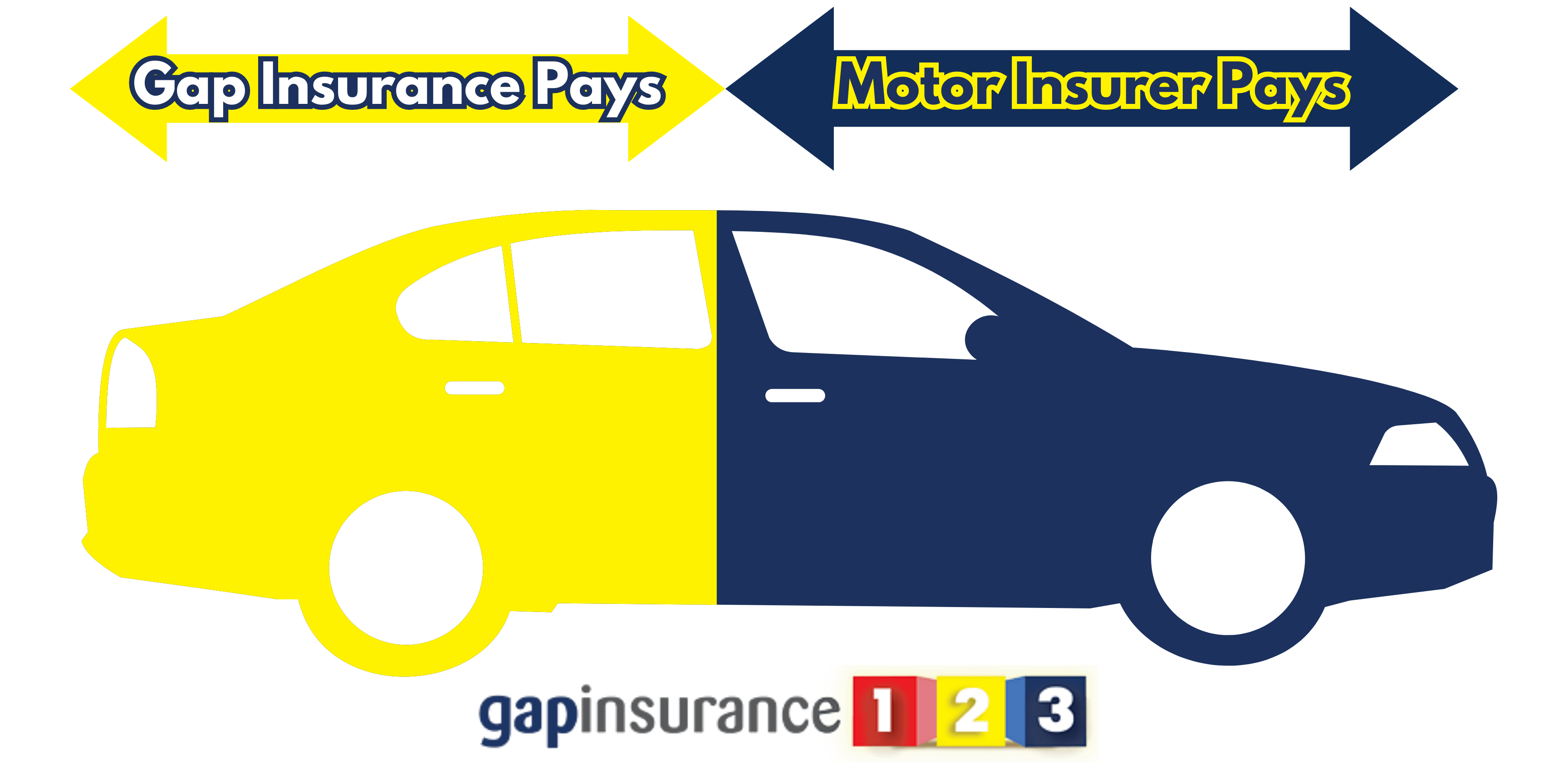Customer Service Lines Christmas Eve 10am-1pm
Please select some policies.



Need Help? Calling from a mobile please call 0151 647 7556
0800 195 4926Do you have a question? or need help?
Customer Service Lines Christmas Eve 10am-1pm, Closed 25th, 26th, 27th & 28th
In the world of GAP Insurance, understanding the nuances of different policies can be a daunting task. Sometimes more than one GAP product may be available, and it may take time to see the differences.
This is often the case when comparing Return to Invoice GAP and Vehicle Replacement GAP.
Here we provide a clear explanation of the difference, and also which situations suit each type of cover.
Detailed Explanation of Return to Invoice GAP Insurance
Detailed Explanation of Vehicle Replacement GAP Insurance
RTI vs VRI - GAP Insurance Comparison
Some real-life case examples to compare RTI GAP and VRI GAP
Vehicle Replacement GAP or Return to Invoice GAP - Choosing the right option
GAP Insurance, or Guaranteed Asset Protection insurance, is a type of car insurance that tops up the market value settlement a car insurer would pay out if your car were written off or stolen.
It's a financial safety net designed to cover you if your car is a total loss and the payout from your motor insurer isn't enough to cover what you paid for the car or any outstanding finance.
A Return to Invoice GAP Insurance policy is designed to top-up the payment you receive from your car insurance company if your car is written off or stolen back to the original purchase price paid.
How RTI GAP works: If your car is written off or stolen, your car insurer will typically pay out the current market value of the vehicle. However, due to depreciation, this amount can be less than what you first paid for the car.
This is where RTI GAP Insurance (also known as Back to Invoice and Retail Price Protection) comes in. It covers the difference between the insurer's payout and the original invoice price of the car, ensuring you're not left out of pocket.
When it is beneficial: RTI GAP Insurance is helpful if you bought your car brand new, as new cars depreciate faster than used cars. Of course, it is still available on used cars and will cover any depreciation if the vehicle is written off.
It's also helpful if you have a car loan or are on a finance agreement, as it ensures you're not left with outstanding debt if your car is written off or stolen.
Real-life example: Suppose you bought a new car for £20,000. Two years later, the vehicle is stolen, and your car insurer pays out its current market value of £14,000.
Your RTI GAP cover would then cover the 'GAP' of £6,000, ensuring you get back the entire £20,000 you originally paid for the car. 
Vehicle Replacement GAP Insurance is also designed to top up a motor insurer's market value settlement if the vehicle is written off or stolen. However, instead of covering the 'GAP' to the original invoice price, it covers the 'GAP' to the cost of the equivalent replacement car.
And this is where the confusion can start. What is meant by an 'equivalent car'?
It means the same age, mileage and specification as the vehicle was on the day you bought it. So if it was a brand new car you purchased, it is the equivalent brand new car when you make a claim. If it was a one-year-old, 10,000 miles example that you first purchased, then it is the equivalent one-year-old, 10,000-mile example when you make a claim.
This works even where the cost of the equivalent replacement vehicle has gone up from the price you first paid.
How it works: If your car is written off or stolen, your VRI GAP Insurance will cover the difference between your car insurer's payout and the cost of replacing your vehicle with an equivalent replacement, one of the same make, model, and specification.
This is particularly useful as the cost of new cars can rise due to inflation or changes in specifications.
When it is beneficial: VRI GAP Insurance is valuable if you want the reassurance of being able to replace your car with the equivalent standard of vehicle you first bought if it's written off or stolen.
It's also useful if you bought your car with a significant discount, as it covers the cost of replacing the vehicle at its current replacement cost when you claim, not the discounted price you paid.
Real-life example: Suppose you bought a new car for £20,000, which included a £2,000 discount off the list price.
Three years later, the car is written off, and your car insurer pays out its current market value of £12,000. However, the cost of a brand new replacement car is now £22,500 due to inflation and fewer discounts being available.
Your VRI GAP cover would cover the 'GAP' of £10,500, ensuring you can replace your car with a brand new one.
While both RTI and VRI GAP Insurance provide valuable protection in the event of a total loss, for many consumers, they can look confusingly similar.
However, the key difference is that RTI, or Back to Invoice GAP Insurance pays back to the invoice price paid for the vehicle as a maximum. Replacement GAP will cover any increased cost of replacing the car too.
This means that VRI can provide a higher payout than RTI, where the cost of the equivalent vehicle has risen since you bought your car.
Pros and cons: The main advantage of RTI is that it is suitable for most vehicle purchases, new or used, cash or financing. RTI ensures you get back what you paid for the car, which can be particularly beneficial if you have outstanding finance. RTI GAP cover should be cheaper than VRI GAP premiums at the same vehicle purchase price.
On the other hand, VRI GAP ensures you can replace your car with the same standard of vehicle you first bought. Because this will mean a higher payout, VRI GAP cover is usually more expensive than RTI.
The key aspect here is the heavy discount on the vehicle's purchase price. Whilst this will not stop it from depreciating in value over time, the cost of an equivalent brand-new replacement will likely be much more than £29,999 in the future.
The fact that the vehicle is on a hire purchase agreement through a finance company does not give an advantage to RTI or VRI cover.
Best GAP Insurance option: VRI GAP Insurance - the cost of a brand new replacement in the future should be higher. RTI GAP Insurance cover will only cover the £29,999 first paid.
The key to this purchase is paying the vehicle's screen price. No doubt this is still a keen price, but there is nothing to suggest that an equivalent vehicle's replacement cost would be higher in the future.
You own the car outright, with no finance settlement figure to be concerned over.
Best GAP Insurance option: RTI GAP Insurance - some providers do not offer VRI on used vehicles. However, even for those who do, there may have no clear advantage of a VRI over an RTI GAP. The RTI premium price should be lower than the VRI price also.
Here a brand new vehicle of a model new to the market has been purchased. As is typical with new models, no discounts are available as the manufacturer is under no pressure to do so.
There is a temptation to assume that VRI would be the best option for all new cars, but in this case, there is no clear argument that the cost of the replacement vehicle could be more expensive in the future. Indeed it could be that say, in three years, when the model has more history in the market, the manufacturer is offering discounts.
Best GAP Insurance option: RTI GAP Insurance - with no guarantee that the cost of the vehicle will go up in the future, an Invoice style GAP may be the best value option.
Choosing the right GAP Insurance can seem daunting, but by looking at a few key factors, you can make the right choice. 
The key factor to consider when comparing these two GAP options is whether the cost of the replacement vehicle would go up in the future. If you think the cost will rise, Vehicle Replacement is the right choice. If you believe the price you have paid is all you want to cover, then Return to Invoice GAP Insurance covers that for you.
With all that said, there is a word of warning. Whilst most Return to Invoice GAP Insurance works the same way, the same cannot be said of Vehicle Replacement.
It is important to compare all GAP policy documents to check what you are covered for. As mentioned above, most RTI GAP Insurance work the same way.
With Vehicle Replacement GAP then, the story is not so uniform.
There are some significant differences you may see
Key aspects to check with VRI GAP:
Many Vehicle Replacement GAP products lack the RTI element. This is important because if the future replacement cost is lower, you could get less than you would with Return to Invoice.
Some Vehicle Replacement products state that if you do not take a replacement vehicle that they directly supply or agree to, your settlement can be reduced to the original invoice price. That is not great when you get an invoice-style settlement when you have paid more for the more comprehensive Vehicle Replacement GAP in the first place.
In 2015, GAPInsurance123 was the first UK provider to introduce 3-in-1 VRI GAP online. All GAPInsurance123 VRI GAP cover can protect you from the motor insurer's settlement to the higher of:
Ultimately, if you are confused between RTI and VRI GAP, the GAPInsurance123 VRI product means you get the best of both worlds. Instead of choosing between two types of policy, the policy gives you the best outcome when you claim.
And all settlements are in cash; we do not supply a replacement vehicle of our choosing.
Understanding the difference between the Return to Invoice and Vehicle Replacement GAP Insurance is crucial in making an informed decision about which type of GAP Insurance is right for you.
Both types offer valuable protection in the event of a total loss, but they cover different 'GAPs' and are suited to different situations.
If you are in doubt and qualify, GAPInsurance123 Combined Vehicle Replacement GAP takes the decision away from you.
Without GAP Insurance, you would only receive the current market value of your car from your motor insurance company if it's written off or stolen. This could leave you out of pocket, especially if you have outstanding finance on the car or the cost of a new replacement car is higher than the market value of your vehicle.
You can get VRI GAP Insurance for used cars, but only from some providers. However, the type of GAP Insurance that's best for you may depend on factors such as the age and value of the car and whether you have any outstanding finance.

Yes, you can usually cancel your GAP Insurance policy within a certain period after purchase, typically 14 or 30 days depending on the provider. After this cooling-off period, you may still be able to cancel your policy, but you might not get a full refund.
This depends on the specific terms and conditions of your GAP Insurance policy. Some policies may cover factory-fitted extras but not those you added after purchase. Always check the policy details carefully.
Some GAP Insurance providers allow you to transfer your policy to a new car, but this is only sometimes true. Check with your provider to understand their policy on transfers.
The value of GAP Insurance for older cars depends on several factors, including the car's worth and whether you could afford to replace it if it was written off or stolen.
As cars age and depreciate, the 'GAP' that GAP Insurance covers can become smaller, so it's worth weighing up the cost of the policy against the potential payout.
A Return to Invoice policy is usually the best option for an older car.
The timeframe for purchasing GAP Insurance after buying a car can vary between providers. Some may allow you to purchase GAP Insurance up to a year after buying your vehicle, while others may require you to purchase it within a few days or weeks. It's best to check with individual providers for their specific requirements.
Get a GAP Insurance Quote in minutes.
See all our GAP Insurance Guides.
Published 20/5/23, Written by Mark Griffiths